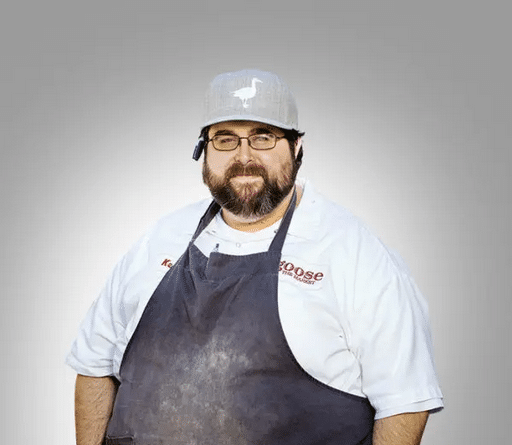Meat & Greet: A Quick Chat With Kevin Fruth Of Goose The Market

You started out as assistant manager at Goose the Market in 2013 and worked your way up to head butcher. What are the biggest changes you’ve seen in that time?
When I started, we were a butcher shop that happened to serve sandwiches and do some occasional tastings. Now, we’re doing so many events, including hands-on butchering classes. A lot more of our customers are really wanting to go back and find out how their protein gets from point A to their plates, and it’s been great to see people at our events take home so much useful knowledge to help their home cooking and how they go about shopping for meat.
What changes have you seen in people’s tastes and what they buy?
I feel like it’s been a pretty interesting mix this whole time. Obviously, there have been regulars since day one who are still coming in. They’re the ones who have a sous vide immersion circulator at home and are looking for the most unusual dish or a specific cut for a recipe they’re making. I love those customers who come in to the shop not because what we have is new and different but because they remember something from their childhoods like ox tail or pork belly. Andrew Luck came in once with his wife and mother-in-law, who’s Czech, and she was so excited to see that we had tripe.
What advice do you give to people who come to your butcher counter with so many options they can’t get at a grocery store?
I would tell them just to be flexible. You really need to look at the counter and figure out what you want to cook and what will be the best fit for your dinner. Grab a beer or a glass of wine. And don’t be afraid to be ask questions. A good butcher can always give you several alternatives. You might not end up making the same dish that you intended when you came in.
What are the biggest mistakes people make?
Generally, it’s inflexibility or not thinking about seasonality. If you come in and we don’t have what you want, we can usually find a substitute that will be just as flavorful or even better for what you’re doing. And just as the best tomatoes and corn are in season in the summer, some cuts just aren’t at their best or even as plentiful at certain times of the year. Certain dishes are better at certain times of the year for a reason.
Why should people pay the extra for what you have if they’ve seen it at a grocery store?
You’re not seeing the small farmer’s product at the grocery store, and the quality and the effort absolutely show in what we offer. The way that the animals are processed in large facilities absolutely affects the texture, flavor, and color of the meat, and you’ll be able to tell that when you cook it and eat it at home.
You were in culinary school in Columbus, Ohio, when you took an externship at Belmont Butcher in Richmond, Virginia. What was the toughest thing to learn about butchering?
Muscle identification, without a doubt. Looking at the end of a New York strip or a ribeye and knowing it by sight. Also, finding the correct seam to make the right cut. At first, it took me 45 minutes to an hour to do this. The people at my externship said they were glad they weren’t paying me because it was taking me so long. Soon enough, however, it became second nature.
What kind of stuff do you take home at the end of the day?
I take home the quick cuts like bavette, which is a style of flank steak, or pork skirt steak, which gets overlooked. And I get some of the extras for special orders like veal.
What’s the new direction for butchering?
Lately, it’s been curated dinners. We’ve been part of Art Dish, a series of communal dinners paired with art. People are finally beginning to see what we do as artful, and we’re getting a lot of great respect.





